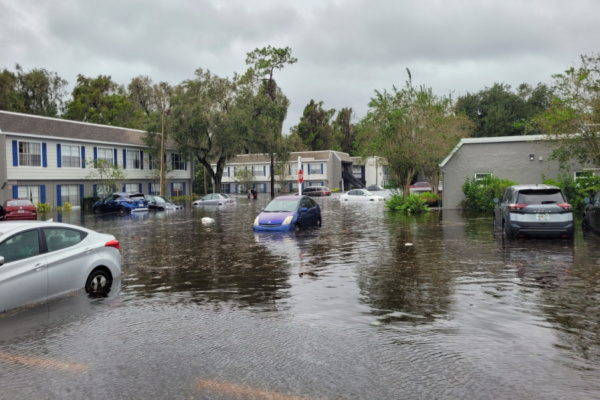Hurricane Ian dealt a severe blow to hundreds of thousands of homes in Florida when it made landfall September 28 as a churning Category 4 monster of a storm. According to AccuWeather, storm surges in excess of 12 feet left many houses submerged in feet of water in just a short period of time. And the damage wasn’t exclusive to those living on the barrier islands along the southwest coast. In inland communities, overflowing rivers burst their banks, deluging homes with rushing floodwaters and causing equally destructive damage.
Residents who evacuated came back to a floor-to-ceiling soggy mess of musty-smelling, mold-ridden structures — all that’s left of what they once called home. They, as well as their fellow Floridians who rode out the hurricane in their homes, are now faced with the daunting task of starting over and the headache of tearing apart the heavily damaged sections.
“The tile floor had this black, slimy mud on them and the carpets — you walk over them and squish, squish, squish and the smell was pretty bad,” Cape Coral resident Jim Sanville told WMTW-TV. “The mold was starting to reproduce.”
“Everything that got water is starting to mold,” Jeff Rioux, of the Gulf Coast city of Bonita Springs, told The Associated Press. “We’re cutting all the drywall out, 2 feet up, trying to get things dried out to save the house and to protect it from more damage.” He was thankful for the several days of nice weather following Ian and for the loaned generators to run fans through the house to help stanch the spread of mold.
One thing remains clear: Time is of the essence when it comes to mold. According to the Federal Emergency Management Agency (FEMA), all it takes is for a flood-laden house to sit soggy for 24 to 48 hours for mold spores to set in and rapidly flourish undetected throughout the structure – from baseboards to cabinets to even linens and behind the walls. Believe it or not, experts say sneakers and other types of footwear left around the house are often the first places people find mold.
And when it spreads, it infiltrates quickly. “If your home has been flooded and has been closed up for several days, assume your home has mold,” the Centers for Disease Control and Prevention (CDC) says, advising flood victims to “completely dry everything, clean up the mold, and make sure you don’t still have a moisture problem.”
The hot Florida days following Ian’s landfall only amplified the problem, as temperatures along the southwestern coast rose into the high 80s: “Days of Florida heat accelerated the development of indoor mold on walls,” AIG reinsurance broker Gallagher Re noted in its initial post-Ian assessment report.
Day by day, more and more heaps of waterlogged carpets, mattresses and other soaked pieces of damaged homes line the streets, according to AccuWeather reporters on the scene.
Alva Sulaty and George Perez waited patiently for their home in the Country Club Ridge neighborhood of North Port, Florida, to dry out from the 2-foot-deep water before tearing out the rain-drenched parts, NPR reported.
Sulaty’s daughter, Tina Krasinski, was helping by sawing through damaged drywall and pulling chunks of wet insulation out of a bedroom wall. She learned how to do most of this from watching YouTube, she said. “There’s a lot of mold,” her daughter, Tina Krasinski, told NPR. “We’re going to try until insurance comes through, I guess, to make it as livable as possible.”
When homes will become fully inhabitable again remains to be seen.
—
Photo Credit: america365 / Shutterstock.com
